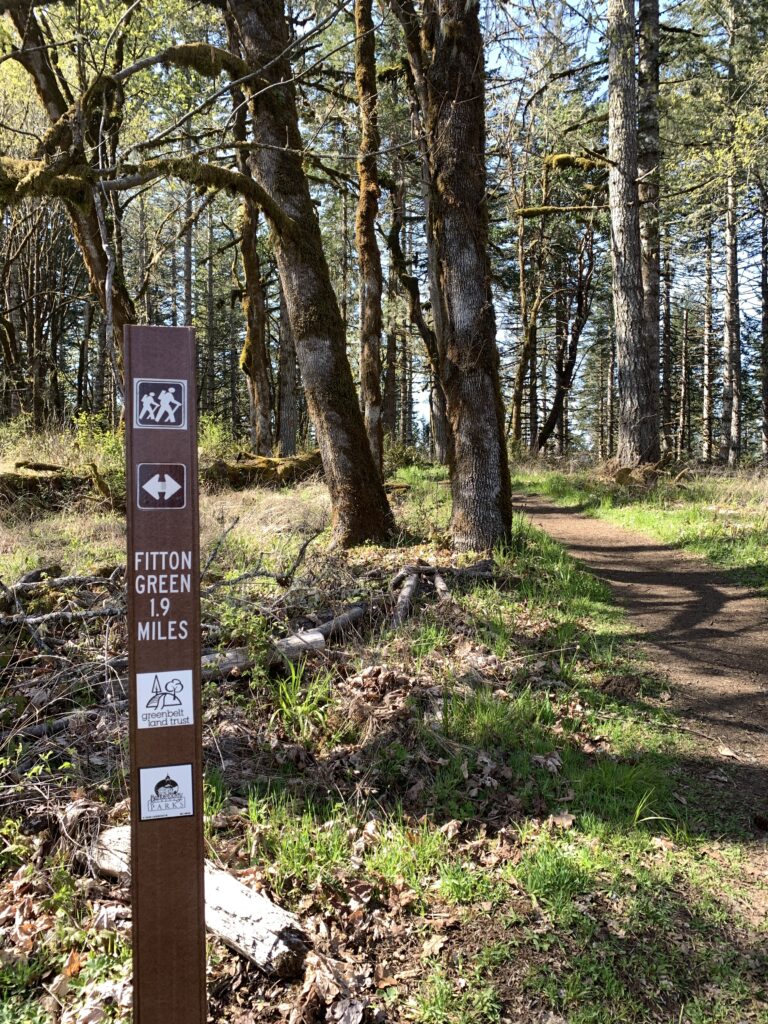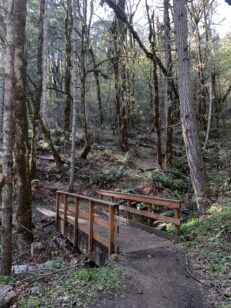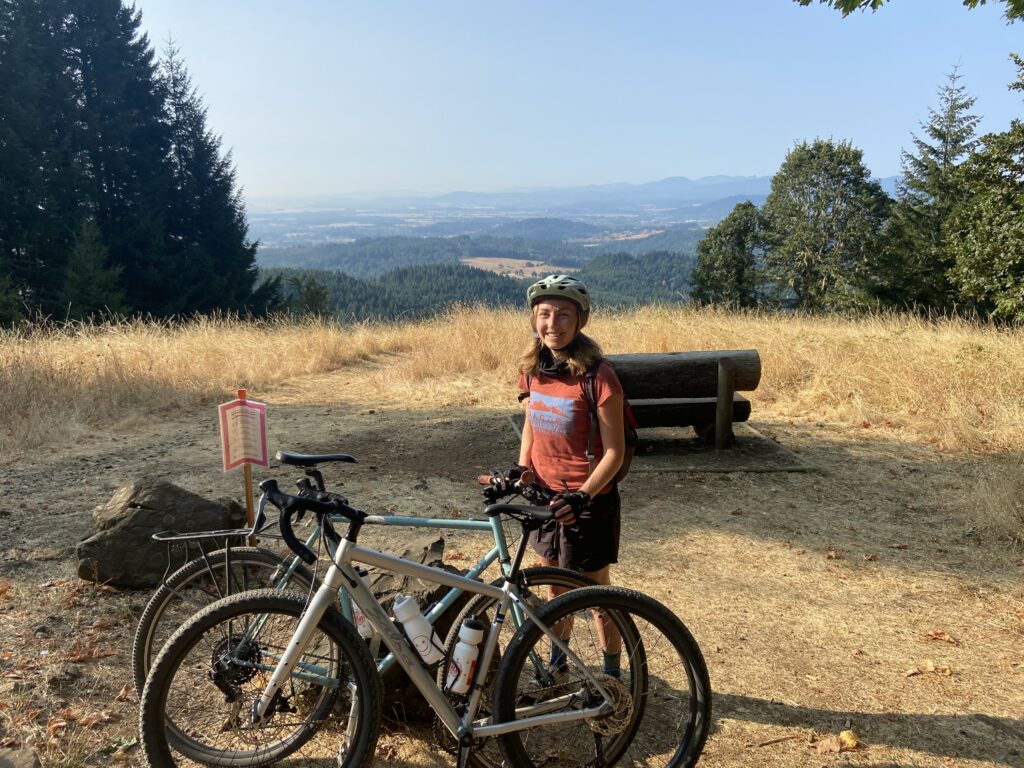People warned us about moving to a new city during a pandemic. It would be so hard to find friends. We would be stuck in a new place with nothing to do. We wouldn’t truly get to experience Corvallis without the football games, the fall festivals, the exploring of restaurants, breweries and coffee shops.
As my husband and I set off from Flagstaff, Arizona, with two cats and too many bikes in tow, I did wonder what it would be like trying to make a home in a new place when all of the usual opportunities for getting to know the community would be limited at best.
 Thankfully, after moving here in June, we quickly found another way to experience Corvallis: through the amazing array of trails that fan out from the outskirts of the city. One of our first discoveries, and now frequent destinations, is the network of trails around the Bald Hill and Fitton Green natural areas.
Thankfully, after moving here in June, we quickly found another way to experience Corvallis: through the amazing array of trails that fan out from the outskirts of the city. One of our first discoveries, and now frequent destinations, is the network of trails around the Bald Hill and Fitton Green natural areas.
Thanks to the Greenbelt Land Trust and its methodical piecing together of conserved lands, this area features an array of interlinking loops and connectors that wind for miles through a mix of landscapes and vistas.
One trail in particular that has quickly become a favorite is the Mulkey Ridge Trail, accessed from Oak Creek Trail. The trail’s proximity to town is a perk, as is its varied terrain. In Flagstaff, a city surrounded by the world’s largest contiguous ponderosa pine forest, the scenery is beautiful but largely dominated by acre after acre of the same species of pine trees.
On our first trip along the Mulkey Ridge Trail, we saw everything from shady, blackberry-draped banks of Oak Creek to oak woodlands, grassy hillsides and deciduous forest.
Crossing over the creek for the first time was an immediate departure from Flagstaff’s dry landscape, while the views of Bald Hill Farm along the Fitton Green Connector Trail reminded me of the summer trip I spent biking through the French countryside.
Dropping into the shady riparian corridor of Upper Mulkey Creek Trail was a lesson in the incredible powers of Oregon’s dense forests to mitigate summer’s heat. Even on a 100-degree day, this stretch of the trail still harbored a cocoon of cool air. My appreciation for the trail grew even greater after our latest trip when my husband and I realized we could use it to bike from Corvallis to the wineries on the other side of Caldwell Hill Dr. We immediately started planning our next weekend adventure.
 And yet, as much as we enjoy these interlinked trails and natural areas for their recreational benefit, I know the connectivity they provide is even more vital for the survival of native plants and animals that coexist with us. In the face of endless pressure from homes, farms, roads and buildings, conserved spaces are vital for ensuring that bobcats, bluebirds, bees, and other native species can continue to keep a foothold in the Willamette Valley.
And yet, as much as we enjoy these interlinked trails and natural areas for their recreational benefit, I know the connectivity they provide is even more vital for the survival of native plants and animals that coexist with us. In the face of endless pressure from homes, farms, roads and buildings, conserved spaces are vital for ensuring that bobcats, bluebirds, bees, and other native species can continue to keep a foothold in the Willamette Valley.
I so value Greenbelt Land Trust for recognizing the importance of conserving native creatures and the small sliver of native prairie habitat that still remains in the valley, so that I can experience a bit of the beautiful landscape that once existed here.
Looking ahead to more months of pandemic precautions and social distancing, I’m sure I’m not alone in feeling very grateful that we can escape to so many trails and open spaces close to home. As more and more people recognize the value of these places, we must channel that sentiment into greater support and action toward conserving these natural areas that allow us to experience beauty, stay sane, and connect with each other.
Emery Cowan grew up in Colorado and spent the past six years in Flagstaff, Arizona where she wrote for the Arizona Daily Sun newspaper and then pursued a master’s degree in environmental science and policy. She moved to Corvallis this summer to start a job with the nonprofit Rural Voices for Conservation Coalition and is loving living in a place with so many shades of green.

